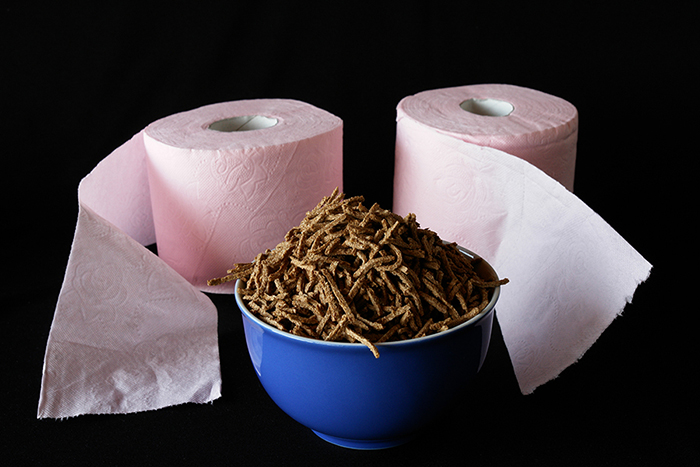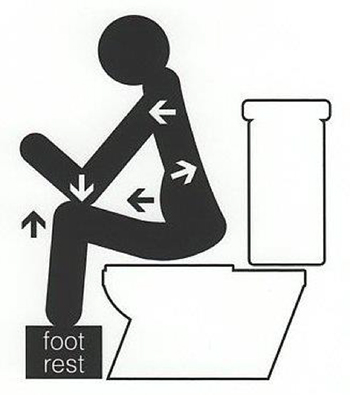
5 Tips For A Perfect Poo
Bowel issues are more common that we think, with a staggering 40% of the worlds population impacted by what are termed Disorders of Gut-Brain Interaction eg Irritable Bowel Syndrome (IBS). Constipation, a common symptom of IBS is uncomfortable and unpleasant. The medical community define constipation as less than 3 spontaneous bowel movements per week, lumpy or hard stools and straining, needing to assist emptying manually or having a sensation of incomplete evacuation more than 25% of the time. Constipation and straining are also common risk factors for other pelvic health conditions such as bladder or bowel leakage, prolapse, and haemorrhoids.
Here are our five simple tips for a perfect poo, they haven’t changed in 5 years so trust us, they work. Your bowel will thank you for it.
Tip 1: Focus On Fibre
- 5-6 serves of vegetables (1 serve is ½ cup vegetables or 1 cup salad)
- 2 serves of fruit (fruits that our bowels love include kiwifruit, figs, prunes and dates)
- Wholemeal / wholegrain options over white (eg. breads, pasta, rice)
- Including beans, nuts and seeds in your diet
Tip 2: Stay Hydrated
Fibre and water work together to keep our bowels moving well. If you increase your fibre but don’t drink enough fluid, constipation can get worse and you won’t produce the perfect poo!
Fluid intake doesn’t just have to include water. Your total daily fluid intake could include water, fruit juice, tea, coffee, milk, soup, smoothies, and yogurt. There is no magic rule about how much fluid we should drink, as each person is different. However, a common sense approach for a healthy person is to have a drink with meals, have a drink between meals, and more if you are thirsty. If you are exercising or the weather is very hot you may need more.
Tip 3: Consider How You Sit To Poo

- Sit on the toilet seat, and lean forward with a straight back
- Rest your feet flat on a low stool if you have one
- Relax your stomach muscles and let your belly bulge forward
- Breathe slowly and try not to push or strain.
Tip 4: Listen To The Call To Stool
Your bowel will tell you when it’s time to poo, and it’s important not to ignore it!
When you feel a bowel urge, that means that your bowel is full, and a sphincter on the inside of your bottom has relaxed, meaning you are ready to poo. This sphincter will usually stay relaxed for around 10 minutes. If you ignore this (for example, if you are out and don’t want to go in a public toilet) this sphincter will close again, and the urge to poo will go away. We usually won’t get another bowel urge until later that day or the next day.
As poo passes though the intestine, water is drawn out. If the poo is sitting in the intestine for a longer time, more water is drawn out, making the poo harder.
Tip 5: Move And Manage Stress
General exercise is very important for keeping your bowels moving. Exercise and movement work like a massage on your bowel, helping poo move through the intestine. Something as simple as taking a walk every day can make a big difference. Even gentle breathing exercises can help regulate your bowels, as breathing helps abdominal muscles and pelvic floor muscles to relax
There is a strong link between the gut and emotional health. 95% of the serotonin (one of our body’s ‘happy chemicals’) produced in the body is made in the gut, emphasising the strong link between emotional health and gut disorders. There are also connections through our nervous system between the brain and the gut. When under stress or anxiety, this can impact stool consistency, abdominal pain, bloating and regularity of bowel movements. Managing stress through general exercise, breathing, mindfulness or relaxation and adequate sleep can all help.Don’t Put Up With Constipation
It is normal to poo anywhere from 3 times per day to 3 times per week, provided your poo is soft and formed, easy to pass and you don’t need to strain. If this isn’t happening, our Pelvic Health Physio’s can help you to:
- Improve your routine or pattern of emptying your bowel
- Improve your stools so they are well formed but soft and easy to pass
- Improve the time you spend on the toilet
- Improve the way you empty so you get that feeling of relief on the toilet!
Addressing constipation will make you feel better and will also help protect your bladder and bowel for the future.




